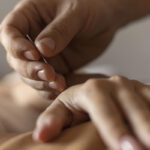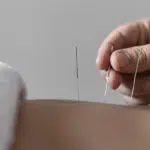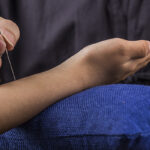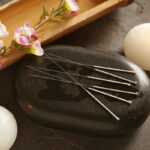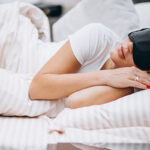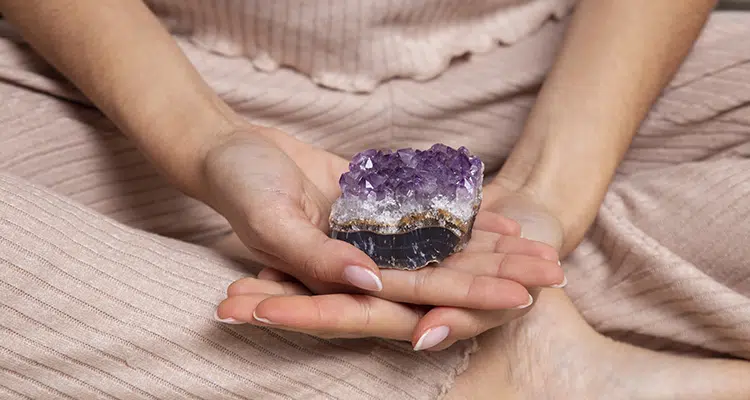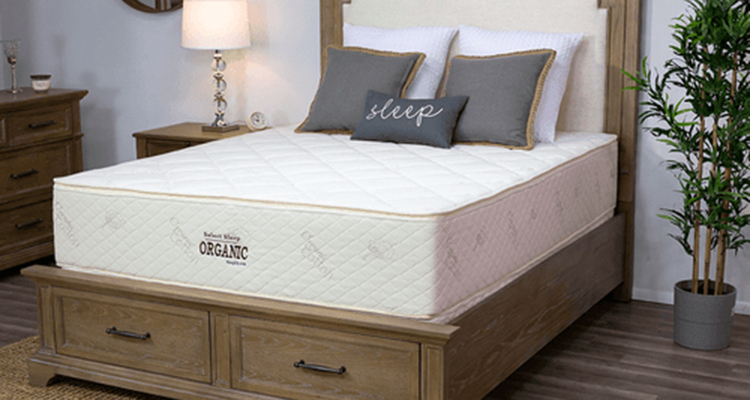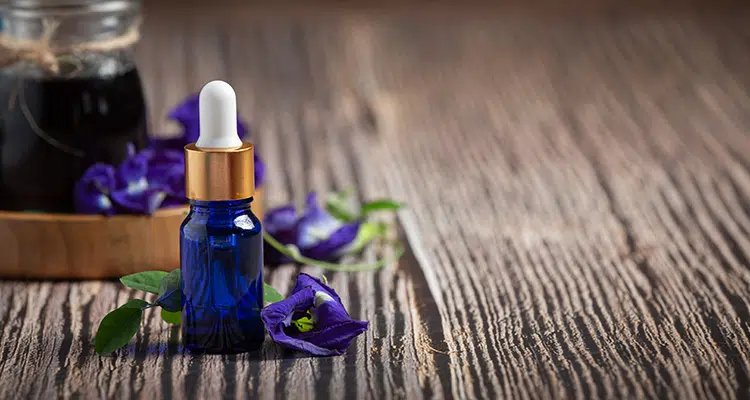The Best Acupressure Points for Sleep
Acupuncture and acupressure are two ancient and highly regarded Chinese practices that originated nearly 3,000 years ago. Both holistic treatments are designed to relieve pain, reduce stress, and promote overall wellness. Another added benefit is improved sleep.
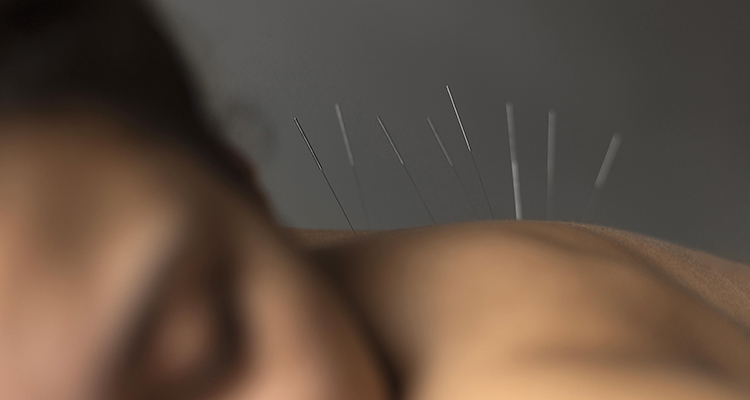
It’s important to note that acupuncture and acupressure are two different practices. Acupuncture involves strategically inserting very thin needles into the skin, whereas acupressure involves applying manual pressure to certain points on the body.
While the latter doesn’t involve needles of any kind, both practices focus on specific pressure points that are connected to other areas of the body. It’s believed that by applying pressure (or inserting a needle) in these strategic places, the patient will experience other benefits throughout their bodies.
For the purpose of this article, we’ll be discussing the best acupressure points for sleep, including where they are, how they work, and how to use this knowledge to your advantage.
Content
What is Acupressure and How Does It Work?
Acupressure is a type of alternative or holistic therapy that involves stimulating certain ‘acupoints’ on the body, manually. Acupressure is done using different parts of the hand including the fingers and palms, as well as elbows, feet, and specialized acupressure tools.
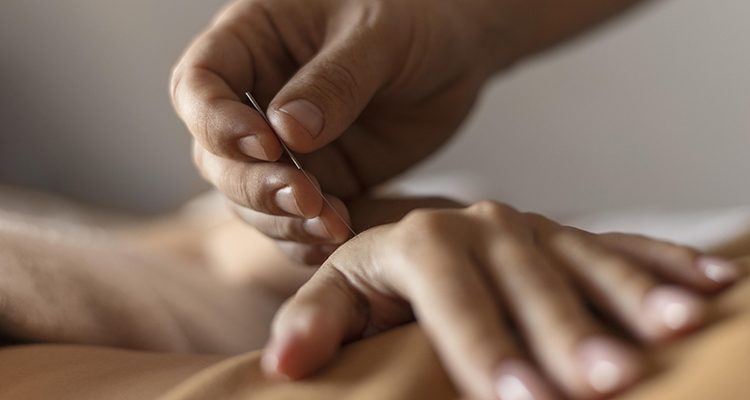
The premise behind acupressure is that energy flows through the body following certain routes or pathways (also referred to as meridians). It’s believed that these pathways create network connections between different parts of the body, including the major organs. Acupressure works to clear any blockages along these meridians, restoring the natural flow of energy. It’s believed that acupressure can treat everything from chronic pain and headaches to stomach discomfort and certain sleep disorders, including insomnia.
This energy flow is known as qi and works to balance the opposing forces of both negative and positive energy – yin and yang. It’s believed that both spiritual and physical ailments are caused by blockages in the qi. Once cleared (through the use of acupressure), your body and mind can return to a place of balance and harmony, improving your overall well-being and sleep.
Can Acupressure Cure Insomnia?
While there’s no specific cure for insomnia, a combination of lifestyle changes, therapy, and support (including CBTi) can all work to ease symptoms and improve your sleep. And acupressure could play an important role in combating troubling insomnia.
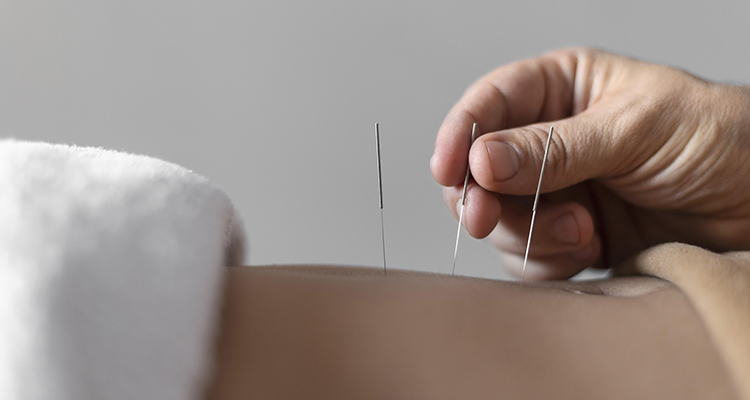
In many cases, insomnia is a secondary condition which means that it’s triggered by something else. Some of the most common causes of insomnia include chronic pain, stress, anxiety, and depression. Acupressure can help ease all of these symptoms, in turn, providing insomnia relief. The better you feel both mentally and physically, the better able you are to fall and stay asleep.
Acupressure advocates also believe that because there’s no definitive physical cause of insomnia that it’s often triggered by spiritual or emotional issues. Because of this, holistic techniques like acupressure may be more effective than medication and other Western medicine alternatives.
The Best Acupressure Points for Sleep
Different areas of the body connect to specific organs and pathways. By targeting the best acupressure points for sleep, you can not only ease the underlying cause of your insomnia but also achieve deeper, more restorative sleep.
Here are some of the best-known acupressure points that promote quality sleep.
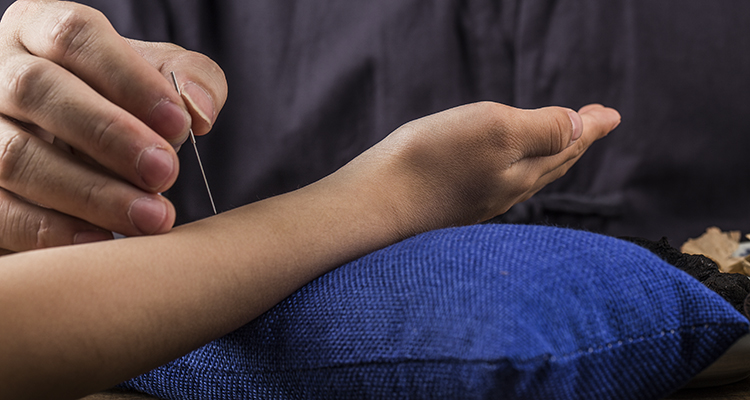
Spirit Gate
Spirit Gate is used to describe the pressure point near the crease of your outer wrist, just below your pinkie finger. Stimulating this particular pressure point is said to help quiet the mind, ease anxious thoughts, and reduce stress.
Start by feeling for the hollow space near your outer wrist and gently apply pressure using up-and-down or circular motions. Continue this technique for 2 to 3 minutes. Next, press and hold on the left side of this point for a few seconds before moving to the right side. Now, repeat these steps on the opposing wrist.
Bubbling Spring
From your wrists to your feet. The next acupressure point for sleep is called the Bubbling Spring and it’s located on the sole of your foot. This pressure point appears as a small indent just above the middle of your foot when you curl your toes. Pressing on the Bubbling Spring can help induce sleep by grounding your energy.
Start by lying on your back with your knees bent so that you can reach your feet. Take one foot in the same hand and curl your toes until you find the small indent mentioned before. Once you find it, start applying firm pressure and massaging this spot using circular motions. You can massage the Bubbling Spring pressure point for several minutes, as long as you can hold a comfortable position. Repeat on the other foot.
Three Yin Intersection
The Three Yin Intersection is a spot on the inside of your leg just above the ankle. By applying pressure here, you can induce sleep plus relieve menstrual cramps and symptoms associated with certain pelvic disorders. In some cases, the Three Yin Intersection is also used to induce labor.
Start by locating the highest point on your ankle. Now, count the width of four fingers up your ankle, toward your leg. Apply pressure here, at the point slightly behind the tibia. Similar to the technique used for the spirit gate, massage using up-and-down motions or circular motions for 3 to 5 seconds. Then, switch to the other foot.
Wind Pool
If you enjoy a good neck massage, you’ll love the Wind Pool pressure point. Located at the back of your neck, you can find the Wind Pool pressure point by feeling for the large bone behind your ears. Follow this groove around your neck until you locate where these muscles attach to your skull. This is the Wind Pool.
Start by clasping your hands together, interlocking your fingers, and gently opening your palms to form a cup shape. Place your hands behind your neck and use your thumbs to apply firm pressure inward, toward your skull. Use up-and-down or circular movements to massage the area for 3 to 5 seconds. Repeat this several times, breathing deeply throughout the massage.
Applying pressure to the Wind Pool can help reduce respiratory symptoms like coughing and nasal congestion which can cause interrupted sleep and snoring. Some people also experience reduced stress and anxiety from this acupressure point.
Inner Frontier Gate
Found directly between the two tendons on your inner forearm, the Inner Frontier Gate pressure point is associated with soothing headaches, nausea, and other stomach discomforts.
Start by turning your palms face up. Then, take the opposite hand and count the width of three fingers down from the crease of your wrist. Here, apply steady downward pressure directly between the two tendons. The same circular or up-and-down motion over this area for 3 to 5 seconds should do the trick! Now, switch to the other wrist.
Yin Tang
Yin Tang, also referred to as GV 20 (governing vessel 20) is located on the forehead, directly between your eyebrows. This acupressure point is associated with reducing stress and tension as well as lowering blood pressure.
Simply use the pads of two fingers from either hand to apply medium, steady pressure in the area for 30 to 60 seconds. Release and repeat as needed.
San Yin Jiao
The San Yin Jiao pressure point is also referred to as SP6 and is believed to help improve sleep patterns in individuals with insomnia. Other benefits include reduced menstrual cramps and relief from other pelvis-related issues as well as urination-related issues.
The San Yin Jiao pressure point is located around the ankle area. Pressure is placed on the inside of the ankle bone using your fingertips. Press slightly upwards toward the calf using medium pressure. Hold firmly for 30 seconds before releasing and repeating this on the other ankle.
Tai Chong
Tai Chong, also referred to as LV 3 is a pressure point that stands for liver 3. Having nothing to do with your liver, this pressure point is located between your big toe and the second toe. Use a single finger to apply pressure between these toes for 60 seconds. Repeat this on both feet. The benefits of this acupressure point include reduced anxiety and blood pressure plus an increase in blood flow and circulation. All of these factors can help reduce insomnia symptoms and improve sleep quality.
An Mian
An Mian is believed to be one of the most effective pressure points used for sleep in both acupressure and acupuncture. Located approximately 1 centimeter behind the middle of your ear, pressing on the An Mian for 10 to 20 seconds can help relieve headaches, reduce anxiety, and induce sleep. Try pressing on this spot behind both ears using two index fingers. Repeat this several times for optimum results.
Shimein
The Shimein point is located in the center of the back of your heel and is said to offer general relief from insomnia and other sleep troubles. Most people use a pen or another small item to apply pressure here. Apply steady pressure that’s firm but not painful.
Neiguan
The Neiguan pressure point is another one located on the inner wrist, about an inch from the crease. Said to help ease both anxiety and digestive issues, stimulating this pressure point can help combat insomnia and improve sleep quality. Some people claim that applying even momentary pressure to the Neiguan using two or three index fingers can trigger immediate relaxation. You can even tape a small, lightweight item to this area to achieve constant pressure throughout the night.
Pros and Cons of Acupressure for Sleep
The idea that applying pressure to certain areas of the body could promote better health and improve sleep quality may seem too good to be true. But thousands of years of research and practice in Chinese culture can’t be wrong, right?
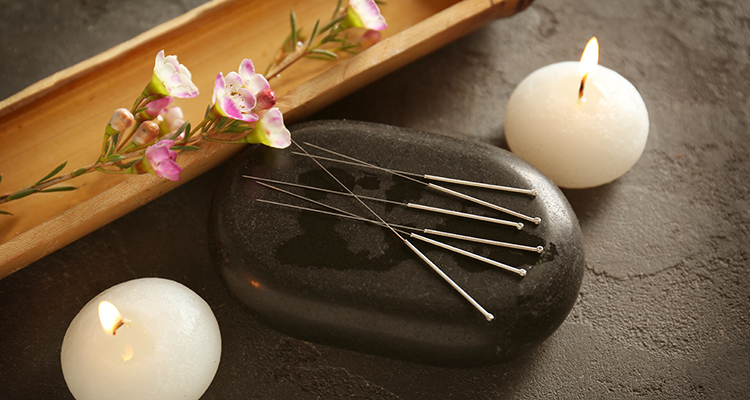
To get a better understanding of how acupressure points for sleep work and if this is a viable solution for your sleep needs, let’s examine the pros and cons from both sides of the issue.
Pros of Acupressure for Sleep
- Reduced stress and anxiety
- Less muscle pain and inflammation
- Increased blood flow
- The targeted massage feels good
- It’s readily available at home
- Reduces the need for certain medications
- Is a natural, holistic treatment option
Cons of Acupressure for Sleep
- Skepticism over the efficacy of acupressure
- Improper acupressure methods may worsen certain conditions like arthritis
- Lack of regulation
Does Acupressure for Sleep Really Work?
Even though acupressure and acupuncture have been around for thousands of years, there’s no concrete evidence that either practice is a cure for insomnia or any other ailment. It’s important to note, however, that acupressure doesn’t claim to cure insomnia but instead, eases symptoms associated with certain sleep disturbances and disorders.
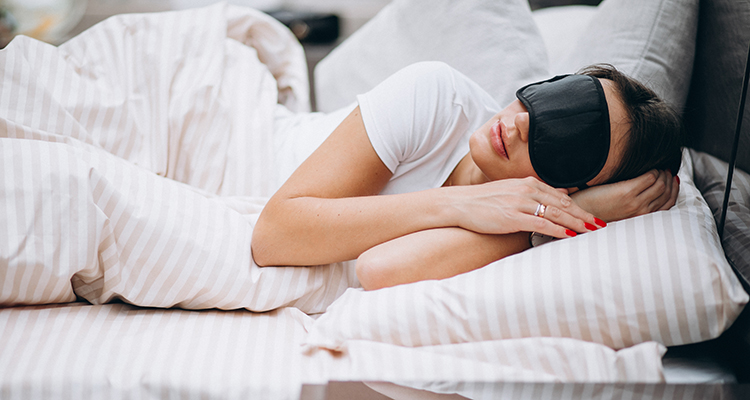
We can, however, draw some conclusions from the information and data we do have. One study conducted in 2010 consisted of 25 patients living in a long-term care facility who reported having sleep trouble. Following 5 weeks of acupressure treatment, all of the participants reported improved sleep quality lasting up to 2 weeks after they stopped receiving treatment.
Because studies and their findings are limited, sleep experts don’t have a lot of data or findings to draw on but still claim that the benefits of acupressure for sleep are promising. There are also no proven downsides or negative side effects of acupressure on sleep quality so if you’re interested enough, there’s no harm in trying!
When to See a Doctor
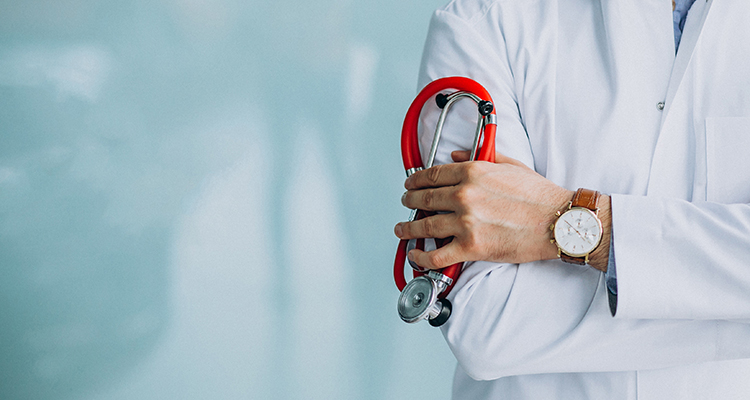
If you think your sleep troubles may be a sign of something more serious or you’re still unsure if acupressure is right for you, you may want to consult with a healthcare professional or sleep specialist. Other signs that it’s time to book an appointment are:
- You’re gaining unexplained amounts of weight
- You have a weakened or compromised immune system
- You’re noticing changes in cognitive function
- Your insomnia symptoms last for more than 2 weeks
If you’re unsure of how to effectively and safely perform acupressure at home, speak with an experienced massage therapist or acupuncturist trained in this procedure.
Adopt Healthy Habits that Promote Quality Sleep
Acupressure is just one way to improve your sleep quality and overall well-being. Adopting healthy routines and habits in all aspects of your life can lead to improved sleep and both mental and physical health.
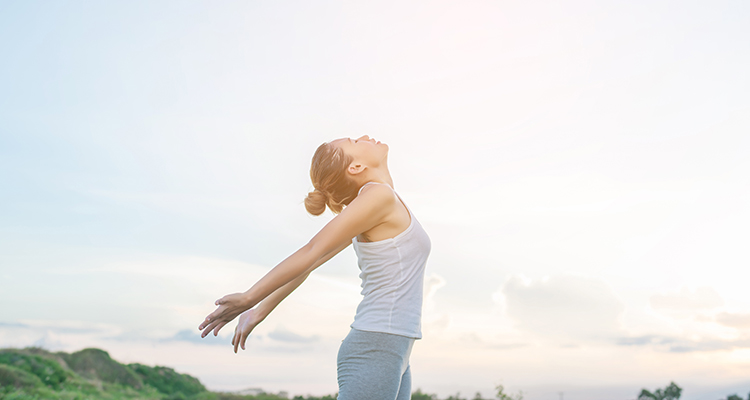
Using cognitive behavioral therapy for insomnia (CBTi), Somnus Therapy’s online sleep therapy program can help you discover the root cause of your sleep troubles and the best approaches to healing. Click here to learn more!

